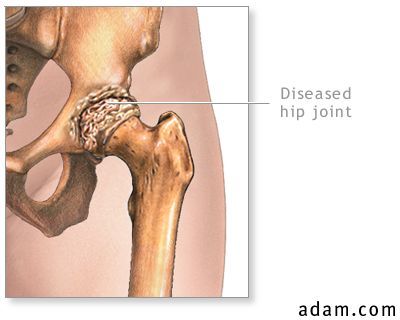|
|

Hip-joint replacement (or total hip replacement) substitutes all or part of the hip joint with an artificial device (prosthesis) that restores joint movement.
Hip-joint replacement is mostly performed in older people. It is usually not recommended for younger people because of the strain they will most likely put on the artificial hip.
Hip-joint replacement is performed in patients who have: - hip pain that has failed to respond to conservative therapy (for six months or more)
- hip osteoarthritis or arthritis confirmed by X-ray
- inability to work, sleep, or move because of hip pain
- loose hip prosthesis
- some hip fractures
- hip-joint tumors
Hip-joint replacement is not recommended for: - current hip infection
- poor skin coverage around hip
- paralysis of the quadriceps muscles
- severe diseases of the blood vessels in the leg and foot (peripheral vascular disease)
- nerve diseases (neuropathy) affecting the hip
- severe, limiting mental dysfunctions
- serious physical diseases (such as metastatic disease)
- morbid obesity (over 300 pounds)
|